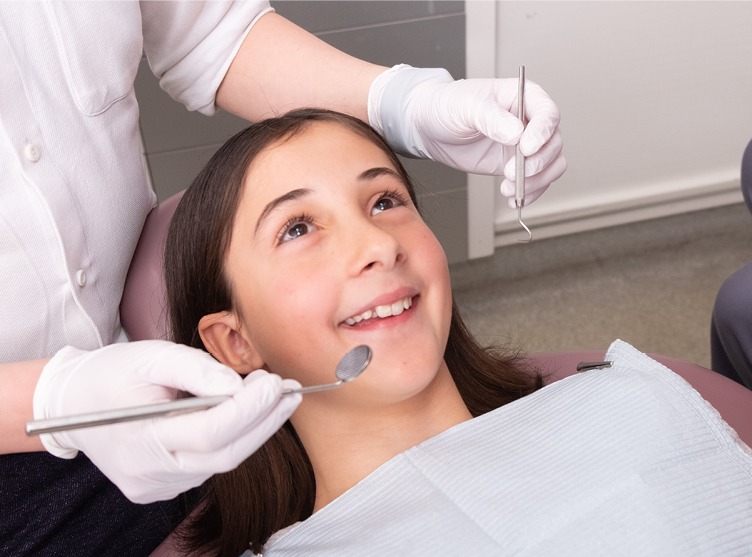Excitement About Legacy Orthodontics
Excitement About Legacy Orthodontics
Blog Article
The Legacy Orthodontics Statements
Table of ContentsThe 10-Minute Rule for Legacy OrthodonticsTop Guidelines Of Legacy Orthodontics4 Easy Facts About Legacy Orthodontics DescribedWhat Does Legacy Orthodontics Mean?The Main Principles Of Legacy Orthodontics
At Advanced Orthodontics, we give people with a all natural treatment experience. In addition, we offer adjustable treatment timetables, versatile repayment alternatives and an enjoyable, delightful experience. leesburg orthodontist. Phone call ( 480) 357-4900 today to learn more and schedule a visit.An orthodontist is a dentist trained to detect, stop, and deal with teeth and jaw abnormalities. They deal with existing problems and are educated to recognize problems that may establish in the future. Orthodontists deal with individuals of any ages, from kids to adults. Individuals often associate a best smile with health.
Malocclusion, or misaligned teeth, can bring about oral problems, consisting of tooth decay, gum condition, and difficult or uncomfortable chewing. But not every person is birthed with straight teeth. If you have a poor bite or large areas between your teeth, you might wish to consult a dental expert concentrating on orthodontic care.
The Best Guide To Legacy Orthodontics
( Picture Credit Scores: DigitalVision/Getty Images) Orthodontists make use of taken care of and removable dental devices, like braces, retainers, and bands, to transform the position of teeth in your mouth. Orthodontic treatment is for oral problems, including: Jagged teethBite problems, like an overbite or an underbiteCrowded teeth or teeth that are also far apartJaw misalignmentThe goal of orthodontic treatment is to improve your bite.
A healthy and balanced bite ensures you can consume, eat, and speak properly. While you may consider orthodontists as mostly for children or young adults who need dental braces, they can remedy oral issues at any kind of age. Orthodontists participate in college, oral institution, and orthodontic college. After graduation, they spend 2 or 3 years in an orthodontic residency program.
, but not all dental practitioners are orthodontists. They focus on two locations: Exactly how to effectively and securely relocate teeth Just how to effectively direct advancement in the teeth, jaw, and faceOnce an orthodontist has completed training, they have the alternative to come to be board licensed.
The Greatest Guide To Legacy Orthodontics
Misalignment, or malocclusion, is the most common factor people see an orthodontist. It is genetic and is the outcome of dimension differences in between the upper and reduced jaw or in between the jaw and teeth. Malocclusion brings about tooth congestion, an irregular jaw, or uneven bite patterns. Malocclusion is normally treated with: Your orthodontist attaches steel, ceramic, or plastic square bonds to your teeth.
If you have only small malocclusion, you may be able to utilize clear dental braces, called aligners, instead of typical braces (https://www.magcloud.com/user/legacyortho). Some people need a headgear to help relocate teeth right into line with pressure from outside the mouth. After dental braces or aligners, you'll need to put on a retainer. A retainer is a custom gadget that keeps your teeth in location.
They're most often made use of on youngsters. They can create extra space in the mouth without having website link to pull teeth. If you have a significant underbite or overbite, you could need orthognathic surgery (likewise called orthodontic surgery) to extend or shorten your jaw. Orthodontists use cords, surgical screws, or plates to sustain your jaw bone.
You may require to see an orthodontist if you have: Crowding or otherwise adequate area for all of your teethOverbite, when your upper teeth come over your base teethUnderbite, when your bottom teeth are also much forwardSpacing or issues with gapsCrossbite, which is when your top teeth fit behind your base teeth when your mouth is closedOpen bite or a vertical space between your front bottom and top teethMisplaced midline, when the facility of your base and upper teeth don't align Remedying an oral malocclusion can: Make attacking, eating, and speaking easierImprove the symmetry of our face and your general appearanceEase discomfort from temporomandibular joint conditionsSeparate your teeth and make them easier to clean up, assisting avoid dental cavity or cavities It's commonly a dental expert who initially notifications misaligned teeth during a routine examination.
4 Simple Techniques For Legacy Orthodontics

Throughout your initial orthodontic consultation, you'll likely have: An oral examPhotos taken of your face and smileDental X-raysPanoramic (360 level) X-rays of your face and headImpressions to produce mold and mildews of your teethThese examinations will certainly aid your orthodontist understand exactly how to proceed with your therapy. clear braces. An orthodontist is a dental practitioner who's had training to treat your teeth and jaw
Orthodontists might execute surgery, exams,X-rays,and even more to aid you obtain a more comfortable, healthier smile. An orthodontist is concentrated on your bite, so something like a damaged tooth would certainly be dealt with by a dental professional. Orthodontists are dental professionals yet not all dental experts are orthodontists. Orthodontists are concentrated on your bite, or the means your teeth meshed, and the straightness of your teeth.
Ever questioned just how celebrities always seem to have flawlessly lined up teeth? The solution usually hinges on the experienced hands of an orthodontist. Yet what exactly does an orthodontist do? Orthodontists are oral specialists that concentrate on fixing abnormalities in the teeth and jaws. Their proficiency goes beyond just developing a beautiful smile; it extends to boosting your general oral wellness and feature.
Indicators on Legacy Orthodontics You Need To Know

While dental braces are one of the most typically identified orthodontic treatment, orthodontists have a varied toolkit at their disposal. The particular strategy chosen depends upon the severity of the situation, the patient's age, and private preferences. These tried-and-true dental braces utilize a system of braces bonded to the teeth and connected by cords.
These removable trays are personalized to progressively move the teeth's setting. In situations of slim jaws, palatal expanders can be used to create space for proper tooth alignment.
Report this page